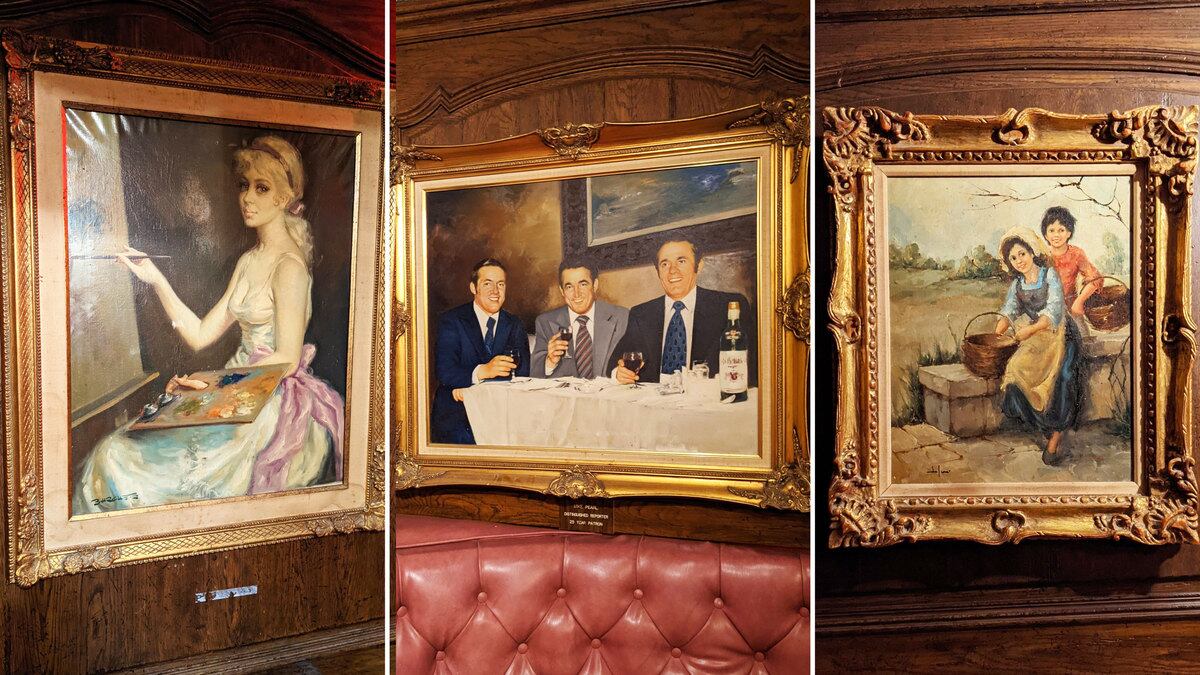When New Yorkers caught wind that Forlini’s, a bustling Italian restaurant in Chinatown favored by downtown sophisticates, was permanently closing its doors in March, grieving patrons flooded their timelines with fond remembrances.
Plans to shutter had been in the works for years. The Forlini family bought 91-93 Baxter Street, the building that housed their restaurant, in the '60s. In 2020, 91-93 Baxter was listed at $15 million, and the restaurant’s owners said they’d close Forlini’s in the event of a sale, which finally took place this year in a deal with an unnamed buyer. For Forlini’s diehards, forewarning did little to soften the blow.
Now its art is up for sale: 32 artworks that once adorned the walls, including landscapes, provincial domestic scenes and a portrait of the Forlini brothers, are available for purchase on the restaurant’s website.
When a beloved, well-appointed New York dining institution closes down, auctions of the items held within are commonplace. After the 2019 curtain call for the iconic Four Seasons, whose interiors were handled by none other than legendary architect Philip Johnson, buyers snapped up custom-made Ludwig Mies van der Rohe barstools, serving carts by Garth and Ada Louise Huxtable and Hans J. Wegner chairs from the mezzanine of the Grill Room. All told, the auction, held in the Seagram Building’s iconic Pool Room, brought in $4,105,623.
Forlini’s troves, fortunately, are much more budget-friendly. An oil painting of a fiddler and a pianist instructing a young child is listed at $5,000, as is the family group portrait and a likeness of a beautiful brunette. A still life featuring grapefruit and a broken wine glass will only set you back $3,500. And this is from the beloved Forlini’s, so who knows what dedicated fans may be prepared to pay?

“Forlini’s occupies a special place in my heart and my stomach,” New York Post senior writer Kirsten Fleming wrote in an Instagram eulogy. “When the iconic, family run Chinatown joint abruptly announced it had closed, I was sad and also annoyed I didn’t go more in the last two years, but that’s life in the big city.”
Since the mid-’50s, the old school red sauce joint served as a much-loved haunt for lawyers, prosecutors and legal aides weary from a day at work at the Manhattan Criminal Courts Building just down the street. Big political names like Michael Bloomberg and Eliot Spitzer hung out too.
“The Forlini family make you feel as though you’re a part of their family when you enter the restaurant,” said Marc Scarpa, the founder of DeFiance Media. “I grew up in New York City and Forlini’s was a pinnacle location in the 1980s and 1990s, especially for Giuliani and the city when they were trying to curb street crime that was perpetuated by some bad actors in the Italian mafia. The restaurant was a neutral gathering place for the district attorneys, the feds, and the crime bosses.”
“At the same time at the restaurant, you’d have a family that was just getting lunch,” Scarpa said. “Everyone was treated the same, there was no hierarchy or elitism.”
Then came an unexpected twist. In recent years, the restaurant was enthusiastically adopted by a chic assemblage of fashion and art world professionals after Vogue chose Forlini's for a pre-Met Gala party, transforming the neighborhood standby into a bona fide hot spot.
“All the kids and art galleries were great to us,” Derek Forlini, who ran the business with cousin Joe Forlini, told the New York Times. “They filled our bar, and we don’t have a bad word to say about them. Lots of them became our friends.” (The Daily Beast reached out to Derek and Joe for comment.)
No matter who showed up, the restaurant's decor reflected the communal spirit of its clientele.
Nestled in pink banquettes, diners caught up over traditional meals lit by glowing chandeliers and took in the artwork adorning the walls, enjoying a heady ambiance reminiscent of Vesuvio, the fictional mob stronghold favored by Tony Soprano. In fact, the restaurant feels so genuinely authentic, it's fittingly served as a filming location for shows like Law & Order: Special Victims Unit and Blue Bloods.
But after the Met Gala party, a shift began to take place. “When it first started happening, I noticed it on Instagram,” Forlini fan Harrison Johnson told the New York Times. “I began seeing the old paintings on their walls and their booth seats appearing in people’s pictures, and I was like, ‘Are people starting to go to Forlini’s?’”

Among the paintings for sale after its closure, there’s a rendering of a bustling public square that particularly stands out. “It could actually be worth more money than any of the others,” Carol Krinsky, a professor of art history at NYU, said. “It’s not Italian, not at all. It’s certainly Northern European, it could be a 17th-century or possibly 18th-century picture, and my guess is that it is a capital city. I don’t know the Amsterdam city hall well enough to be sure, but it's certainly a large public square in Northern Europe.”
“It is commercial art, and it was probably intended by some of the artists to be what we could call fine art or elevated art in some way,” said Krinsky of the collection as a whole. “The artists for the most part I think were sincere craftsmen, but the results are entirely conventional.”
In any case, for members of New York’s savvy, well-heeled cabal of aesthetes, Forlini’s souvenirs could quickly become must-haves.
“These paintings have witnessed some of the most clandestine conversations of the past 25 years of New York, from private eyes gossiping about the philanderers they’re tailing to judges unwinding from a murder case over a chicken parm,” Marcella Zimmermann, senior vice president at consultancy Cultural Counsel, told the Daily Beast. “What’s that worth?”
“If people really like them a lot, enjoy the realism or enjoy the emotional feeling that they have,” the paintings are worth paying for, Krinsky said. “If people like landscapes, or if they like slender ladies with dark eyes that they think are expressive, well, I hope they enjoy having the picture. I might not pay anything for most of these pictures, because many of these subjects are familiar. But a person who wants a nice landscape? Gee, why not?”








